San Antonio & Aransas Pass RR
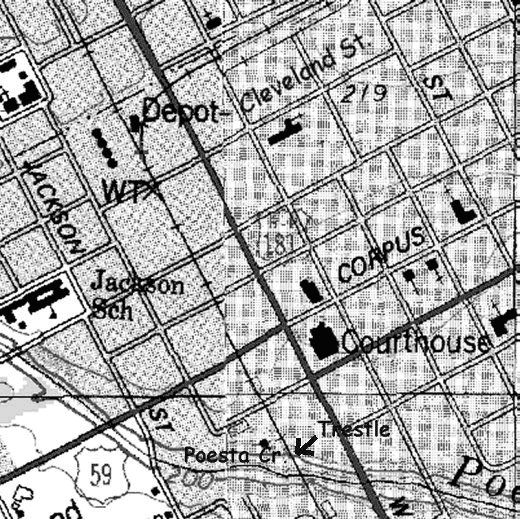
In 1886 Uriah Lott brought the first rail road into Beeville. Four years later,
the Gulf Western Texas & Pacific arrived, building southwest from Victoria. The two lines
met at the Beeville Depot, shown on this Geodetic survey map.
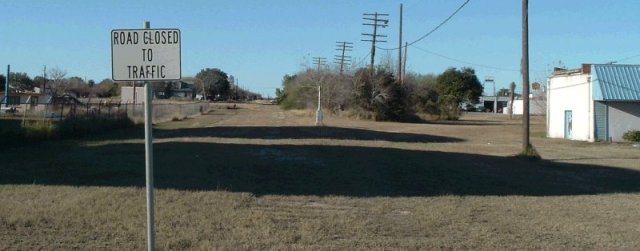
Both railroads were eventually absorbed by the Southern Pacific and I vaguely remember departing from this station with my grandmother when I was five years old. I remember that I was excited by the prospect of riding the train, but when the moment came I was terrified. I remember my grandmother pulling on my arm as I tried desperately to escape, screaming, "I don't want to get on the train! I don't want to get on the train!" The details escape me, but I remember the friendly conductor kneeling in front of me and promising me a soda water if I would get on the train. I did get on the train, but I am sure I never got the soda water.
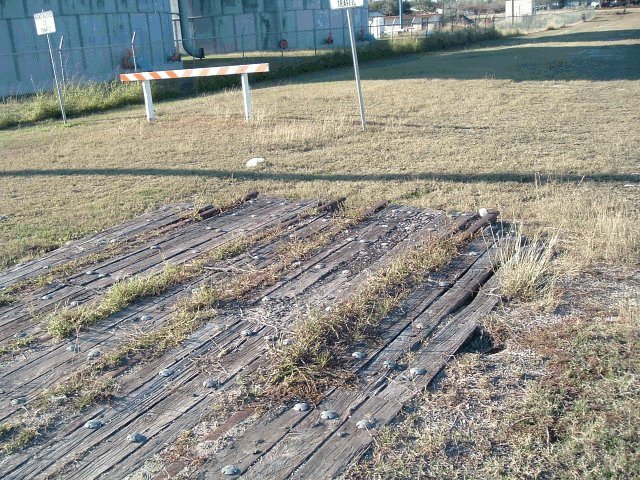
When they took up the rails in the 1990's, they stopped right here at the Cleveland St. grade crossing.
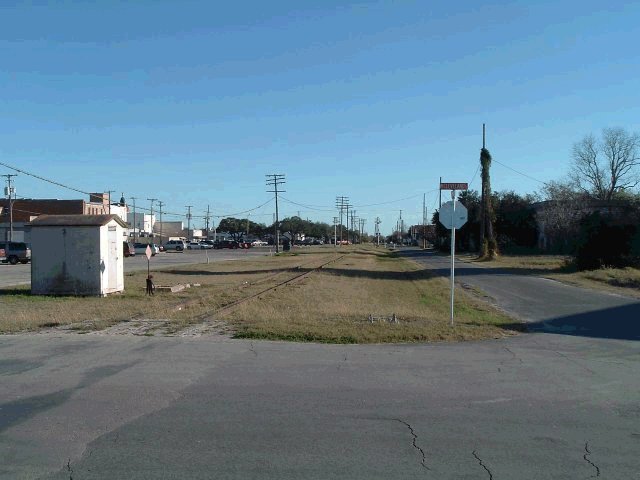
If you face south at the same location, you find the tracks are still in place on the other side of the grade crossing. The wooden timbers that formed the crossing are still visible where they protrude from the layers of asphalt. The switch that controlled the direction of trains coming up from the Gulf Coast is still visible next to the little railroad utility shed.
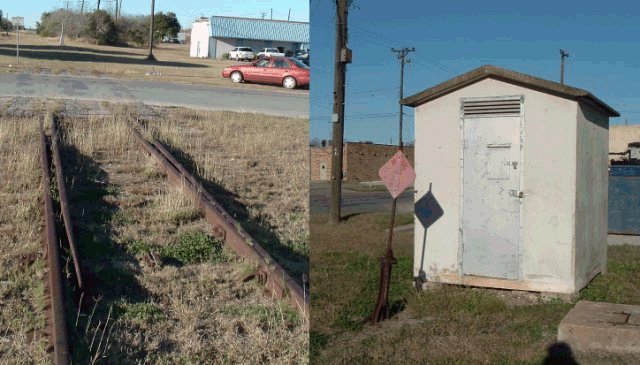 Here you can see the movable rails that made the switch work. It appears that the last train through Beeville was headed north to San Antonio and not east to Victoria or Houston.
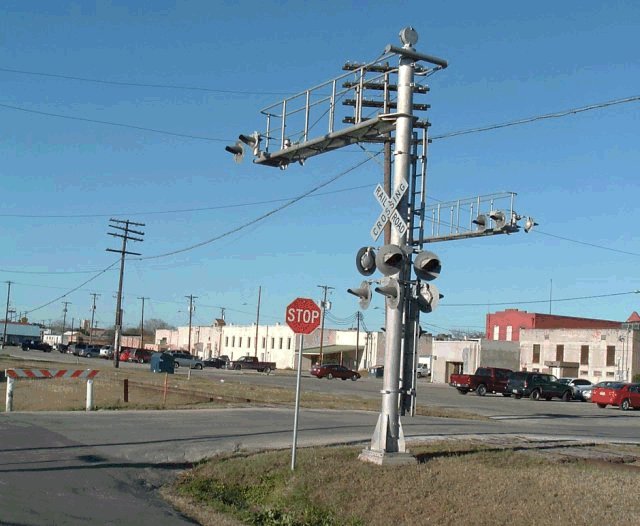 Following the tracks south to Hefferman St., we find the traffic signals and the railroad crossing are still standing, looking as if they were still alert for an approaching train.
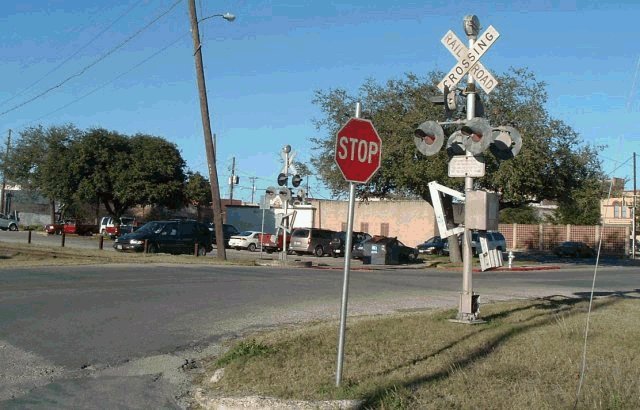 At the Bowie street crossing, the signals still stand, but the crossing guard arms have been removed.
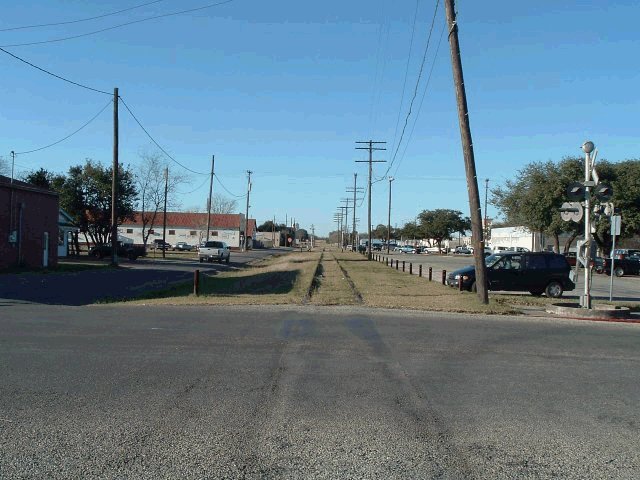 One more block, and the tracks come to an end once more at Corpus Christi St., after only three short blocks.
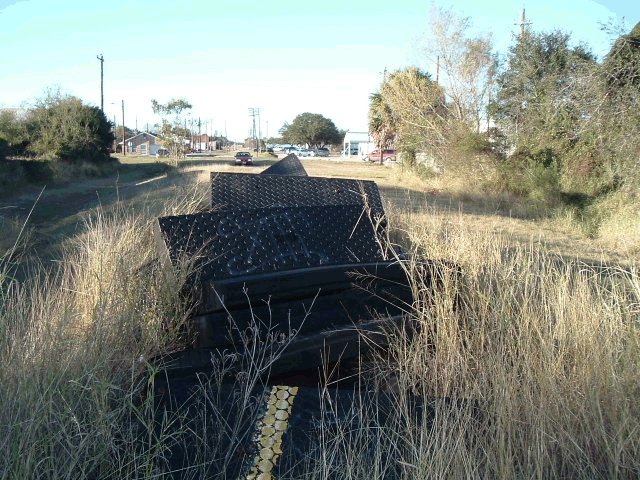 Fifty yards along the the abandoned right of way I found this mysterious pile of black objects lying forgotten in the weeds. I have no idea what they are.
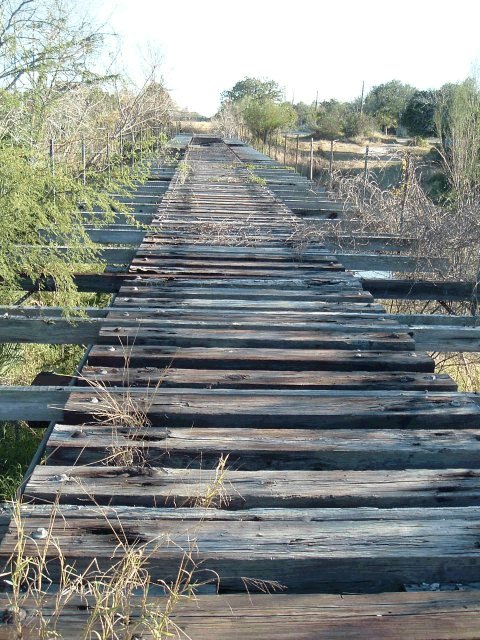 I was suprised to find, just a few yards farther on, a trestle, still spanning Poesta creek. There are no rails, but the timbers and the steel frame are standing, and it appears they are going to be there for a long time, out of sight overgrown by weeds and mesquite trees. For not quite a hundred years, long lines of freight and passenger cars rumbled north and south along this line, pulled by steam engines and then by diesel locomotives. For almost a hundred years, the long lines of cars rumbled along this line by day and night, waking the sleepy citizens of Beeville with their lonesome steam whistles, and later their raucous air horns. Now they are gone. Sleep well, citizens of Beeville. The railroad is gone forever. Lefty
|